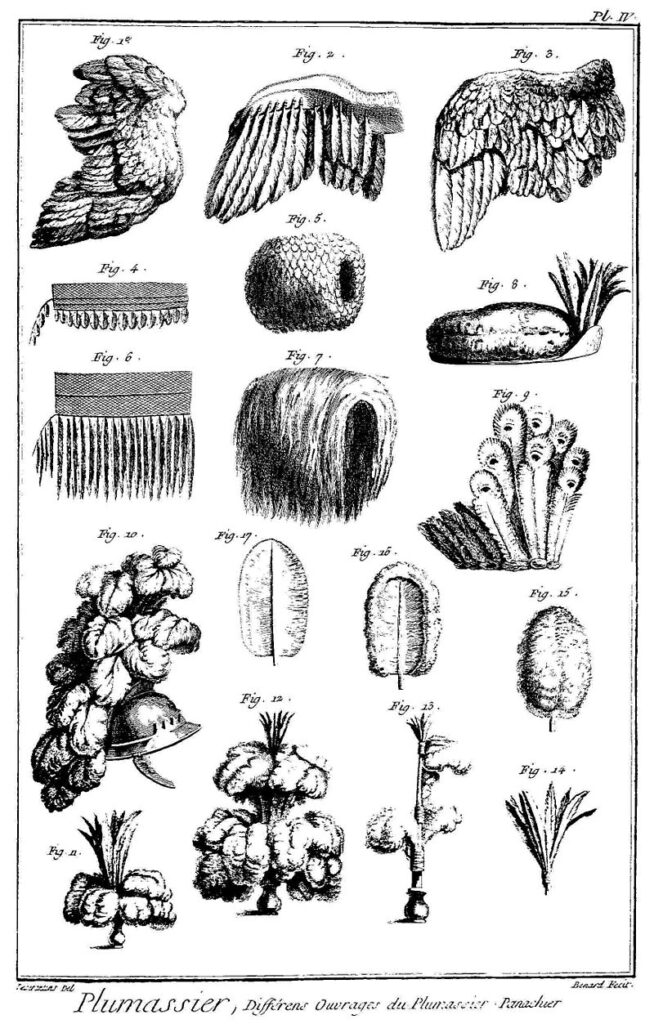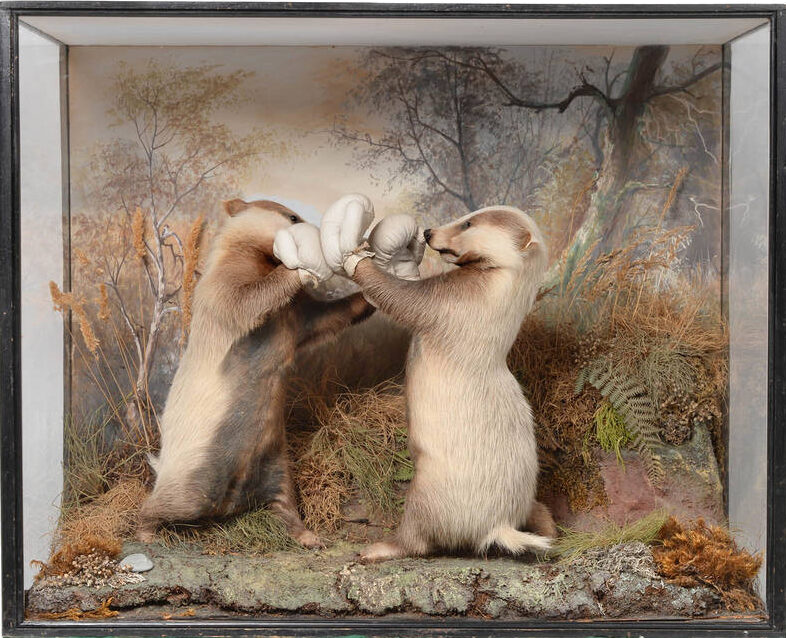Victorian feather fashion craze and the Plumassier
The Victorian feather fashion craze demanded that the 19th century taxidermists took advantage of their position at the centre of dealers and collectors’ worlds. They had a steady supply of dead species, and also diversified their business with feathers when the Victorian feather fashion craze took off. These feathers were freely available and in abundance.
The demand for elaborate feathers to adorn hats, dresses and other accessories created the Plumasserie industry during the eighteenth and nineteenth centuries. This in turn led to intensive hunting of certain birds, even causing the decline or disappearance of some species; such was the impact on the avian world that associations such as the Royal Society for the Protection of Birds were established to oppose it.
At the end of the nineteenth century, there were nearly eight hundred houses in Paris employing six to seven thousand Plumassiers, often dealing with only one type of feather at a time.
During the same period, London’s Plumasserie industry was largely concentrated in the East End. It was certainly a lucrative business, with £500,000 worth of ostrich feathers were imported into London in 1883 alone. Many taxidermists and naturalists of the day took advantage of these new commercial opportunities.
THE MID 1800's
There was an abundance of never-before-seen species of birds coming from exotic locations like South America, South Africa and India. Few stylish homes in the mid to late Victorian era were without at least a cabinet or two of stuffed birds.
Victorian taxidermists and “bird stuffers” were everywhere. Taxidermists also became Plumassiers to take advantage of the trends in fashion and from the mid-1800s onwards, the abundance of birds led to the capitalisation of the fashion trend that brought new employment and trade opportunities.
These Victorian Plumassiers made everything from hats to handbags for the fashionable ladies of the day with the feathers of exotic birds, mostly hummingbirds and birds of paradise.
The London dealer, Manning, whose engraved trade card we see here was one of many Victorian Plumassiers active in London during the nineteenth century with premises at 33 Conduit Street and later at 152 Regent Street.
At this time feather-makers often either doubled as, or worked in close contact with, flower-makers, or fleuristes, and Manning appears to have been no exception . He advertises “artificial flowers of every description” alongside his “curious feathers”. The trade card is surmounted by the royal crest of Manning’s most important clients.

THE VICTORIAN OBSESSION
From the mid-19th century, the catalogues of the large department stores that had begun to spring up brought a huge variety of hats to a much wider clientele; before this, they had sported hats made of rabbit fur or even wool. In France it was Bon Marché and Galeries Lafayette; in London, Whiteleys was followed by Peter Robinson, Liberty and Harrods.
Unsurprisingly, the trade burgeoned. The plumage craze, namely the fad for elaborate hats among fashionable women that were adorned with entire bodies of egrets, hummingbirds and other exotic avians and became popular in the 1880s.
Murderous Millinery
In the first quarter of 1885, 750,000 egret skins were sold at London auctions, and in 1887 a single London dealer handled 2 million of them. The city cornered the international feather market, and buyers came from across Europe and from the US to view and buy stock. Nearly 40 million pounds’ weight (more than 18,000 tonnes) of plumage and bird skins, excluding ostrich feathers, was imported into the UK between 1870 and 1920. Maybe 200 million birds a year were being killed.
This fascination for critterly headwear remained a potent cultural
impulse until the Plumage Bill (1921) banned imports of birds for the purposes of “murderous millinery”


THE LAST WORD
In the 18th and 19th centuries when travel became possible, explorers and hunters had a new playing field. They went to far-off countries and killed things and brought or sent them back to Britain, sometimes as a result of “commissions” from London traders or as trophies and objects for scientific discovery.
During the 18th century many of these animals ended up in Menageries, then came the Circuses and Zoos.
There were no reference books. People had never seen these objects before and the level of general illiteracy was high, so Victorian taxidermy helped people to look at these creatures and give them a way of learning about the world.
In those days the Victorian taxidermy industry took advantage of the abundance of creatures. Climate change hadn’t yet impacted our attitudes or destroyed animal habitats, neither had the global economic market started – nor the collective moral conscience. Birds were killed deliberately for their feathers and the fashion industry couldn’t keep up with the demand.
Let’s not pretend that killing animals was ok. We know better now. We can’t reverse what has been done and we can’t bring these animals back to real life.
What we can do is appreciate what we have managed to conserve so far and ensure that future destruction is avoided as far as possible.












































